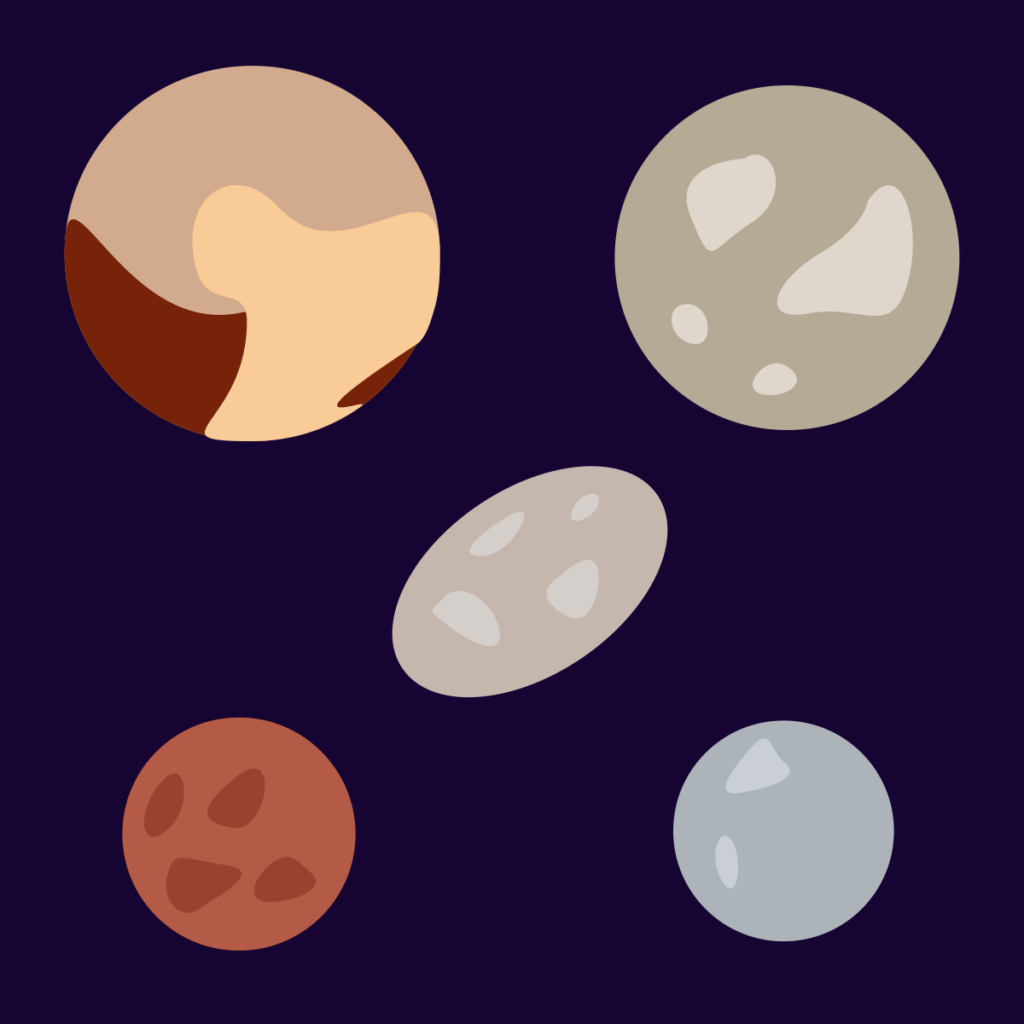Last Reviewed and Updated on August 1, 2022
Dwarf planets might not be full-fledged planets, but that doesn’t mean they don’t have anything to offer. These astronomical objects are just as interesting, some even more, than regular planets in our Solar System. Read through these interesting facts about dwarf planets, and you will see why they are amazing.

1. Dwarf planet Pluto was previously a planet
When Pluto was discovered in 1930, it was classified as a planet and remained a planet for 76 years, being the ninth planet in our Solar System. In 2006 it was demoted to a dwarf planet.
2. Dwarf planets can have their own moons
Dwarf planets aren’t all that different from regular planets. Some, like Ceres, don’t have moons, while others, like Pluto, have one or more moons.
3. There are 5 dwarf planets or more, depending on who you ask
The international astronomical union (IAU) currently recognizes five dwarf planets in our Solar System, with quite a few others being considered. The officially recognized dwarf planets are; Pluto, Ceres, Makemake, Eris, and Haumea. Some estimate there could be over 100 dwarf planets in our Solar System, and some astronomers recognize many of them as dwarf planets, even though they aren’t (yet) classified as such by the IAU.
4. Haumea is a very oval

One of the coolest facts about dwarf planets is about Haumea. While Huamea’s shape wasn’t yet directly observed, the calculations from its light curve suggest and confirm it is a Jacobi ellipsoid. The longer axis is about twice the length of the shorter one.
Think this is cool? You are going to like our list of amazing space facts.
5. Ceres was first a planet, then an asteroid, and is now a dwarf planet
The classification of astronomical bodies can change, both as we learn more about them and as our criteria for the classification of bodies change over time.
Ceres was discovered in 1801 and was considered a planet. In 1850 it was reclassified as an asteroid as dozens of other objects were discovered in similar orbits. In 2006 Ceres was reclassified again, this time being classified as a dwarf planet.
6. Pluto is the largest of dwarf planets but not the most massive one
When it comes to size, Pluto is the largest of the known dwarf planets. When Eris was discovered, it was first thought that it was bigger than Pluto, but that isn’t the case. It is, however, more massive than Pluto is.
7. Haumea has a ring system
Ring systems aren’t exclusive to planets. Haumea has a ring system of its own, and it is the first known Kuiper Belt Object to have rings. It is also the only known dwarf planet with a ring system.
8. Dwarf planets have not cleared the neighborhood around their orbits
And here lies the difference between a planet and a dwarf planet. What this means is that a dwarf planet shares its orbital space with other bodies that are a similar size and aren’t satellites of the dwarf planet, unlike a planet.
9. Eris is the most distant dwarf planet from the Sun
As far as the known and officially recognized dwarf planets go, Eris is the most distant from the Sun.
10. The term and classification of a “dwarf planet” was introduced in 2006
Objects being classified as dwarf planets is a fairly recent thing. This classification was introduced as with discoveries of new Pluto-like astronomical objects, a better definition of what a planet is was needed.
